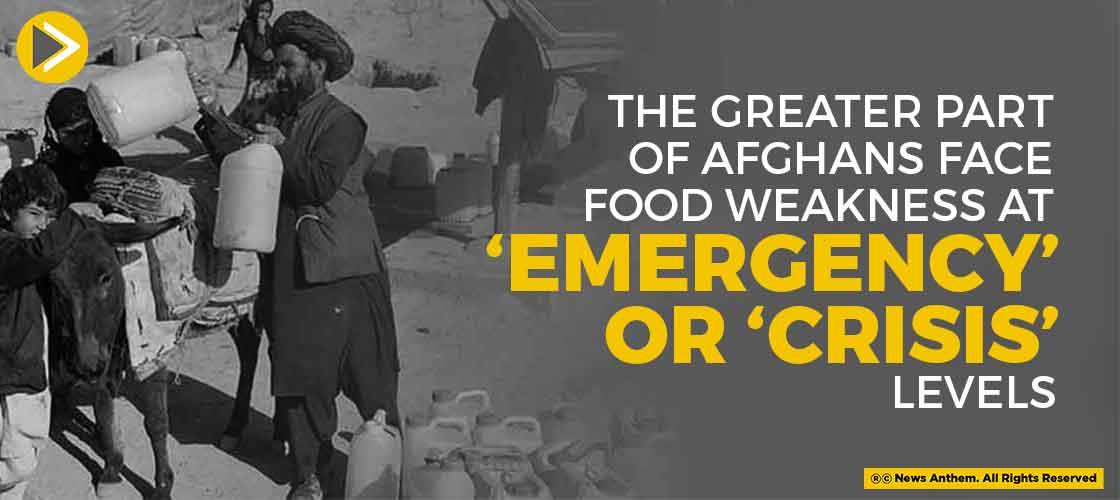The Greater Part Of Afghans Face Food Weakness At 'Emergency' Or 'Crisis' Levels

News Synopsis
The principal causes of food insecurity in Afghanistan are lack of employment opportunities, low wages and low household income, insufficient local production of wheat and cereals, declining livestock production, insufficient water resources for agriculture (i.e. drought) lack of access to, and poor quality of drinking ...
The greater part of Afghans face food weakness at 'emergency' or 'crisis' levels
As separated conflicts and viciousness keep on plaguing Afghanistan under the Taliban rule, the United Nations says almost 23 million individuals, or 55% of the population, are assessed to be in an emergency or encountering crisis levels of food weakness among now and March of the following year.
In its most recent circumstance report delivered on November 3, the UN Office for the Coordination of Humanitarian Affairs (OCHA) shows to worry about "restrictive philanthropy" or endeavors to "influence" compassionate help for political purposes. Benefactors are likewise asking that exchanges and different exercises needed for compassionate tasks be avoided from the extent of authorizations, to permit these exercises to proceed without hindrance.
The Afghanistan Flash Appeal, which targets 11 million individuals with help through the year's end, looks for $606 million and is presently 54% supported, with a deficit of some $276 million.
Since 1 September 2021, the UN offices and their accomplices have arrived at 48,383 youngsters with local area-based training exercises, upheld 82,761 individuals with crisis cover and non-food things (NFI), and gave 4.1 million individuals food help. Around 580,050 individuals got essential medical services and 85,623 youngsters under five got therapy for intense unhealthiness.
You May Like









